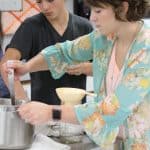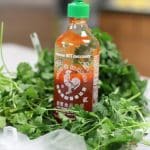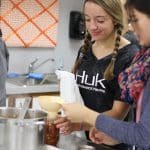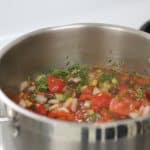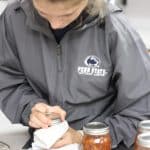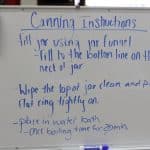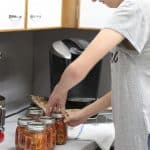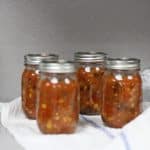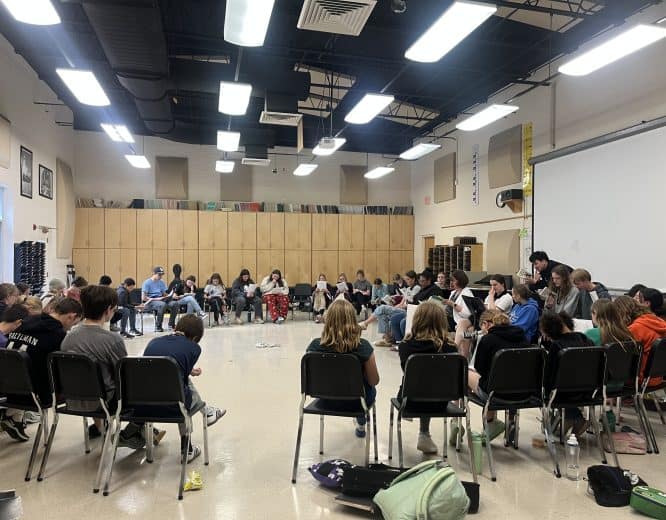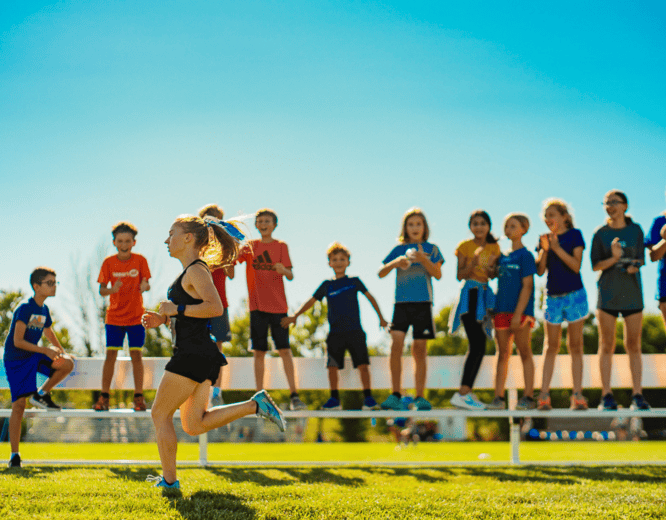Sewing and Canning Still Important Life Skills
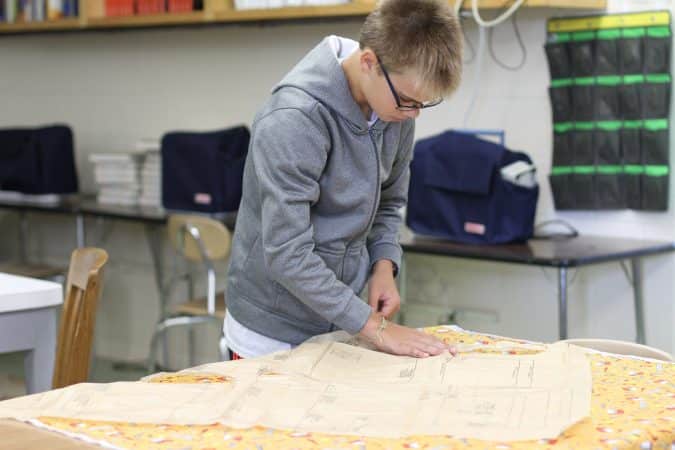
While the arts of sewing a pair of pajama pants or canning a jar of salsa may not seem priority in the tech-infused 21st century, Eastern Mennonite School teacher Anna Haarer sees a lot of value.
“Sure, you could buy a pair of flannel pants at a big box store for less than good quality cloth might cost to buy,” she says.
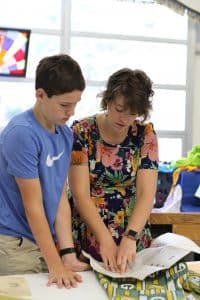
Family and Consumer Science sewing
Haarer, a 2009 graduate of the school, is in her fourth year teaching Family Consumer Science at Eastern Mennonite School. While she loved her own FCS studies at EMS, she didn’t intend to pursue teaching the skills, even when then-FCS teacher Luann Miller ’81 Bender encouraged her to consider it.
“I thought I was going to be a math teacher, or pursue something in the sciences,” she explains about her studies at Bridgewater College where she earned a BS in Family and Consumer Science “But I realized I could do both math and science in the context of this work.” One drawback, she hesitantly admits, is that this job makes it hard to feel motivated to cook for her own family, which includes husband Duane, EMS class of ’08, and two-year old Zoey. “It’s a common hazard of the field,” she laughs.
Haarer’s course load includes: middle school six-week exploratory sessions that cover cooking, sewing, nutrition and money management. And for high school, sewing I and II, interior design and housing, ethnic foods, food science and nutrition, and human development. In addition to her teaching load she serves as advisor to the Big Buddies Club, which pairs middle and high school students with elementary students for activities.
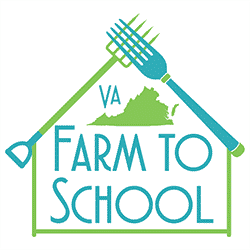 The salsa canning day in late August came about as part of Haarer’s participation in Virginia Department of Education’s “harvest of the month” program. The program promotes seasonal eating and increased fruit and vegetable consumption while helping to support the local economy.
The salsa canning day in late August came about as part of Haarer’s participation in Virginia Department of Education’s “harvest of the month” program. The program promotes seasonal eating and increased fruit and vegetable consumption while helping to support the local economy.
Tomatoes were featured in August. “We used a student’s family salsa recipe with tomatoes from Season’s Bounty [a nearby Community Supported Agriculture farm,” Haarer says. “We wouldn’t have had to do the extra step of canning, but I like them to learn how to preserve their own food. And it was nice for them to take something home to show what they’ve done. A lot of parents expressed appreciation for that at the following week’s parent night.”
In September students are cooking with sweet peppers and in October, they will focus on apples.

